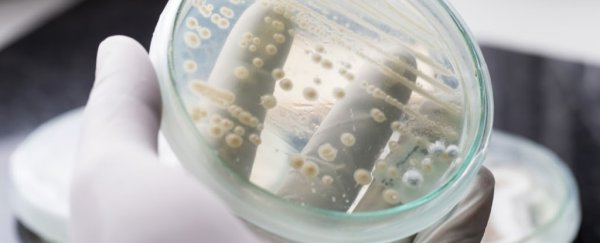Three years ago, US health officials warned hundreds of thousands of clinicians in hospitals around the country to be on the lookout for a new, quickly spreading and highly drug-resistant type of yeast that was causing potentially fatal infections in hospitalized patients around the world.
Candida auris has become a serious global health threat since it was identified a decade ago, especially for patients with compromised immune systems.
It has been reported in more than 30 countries and is probably more widespread than that because the organism is hard to identify without specialized laboratory methods.
It is resistant to multiple antifungal drugs, and can spread between patients in hospitals and other health-care facilities and cause outbreaks. The fungus can lead to infections of the bloodstream, heart or brain, and early studies estimate that it is fatal in 30 to 60 percent of patients.
Researchers have never been able to isolate the fungus from the natural environment or figure out how genetically distinct versions emerged independently at roughly the same time in India, South Africa and South America.
Now researchers in the United States and the Netherlands have a new theory: They propose that global warming may have played a key role and suggest that this may be the first example of a new fungal disease emerging from climate change, according to a study published Tuesday in mBio, a journal of the American Society of Microbiology.
Fungal infections in humans are rare. Mammals have more advanced immune systems than other organisms at risk of fungal infections, and most fungi in the environment cannot grow at the temperatures of the human body, said Arturo Casadevall, one of the authors of the new study, who is a microbiologist and immunologist at Johns Hopkins Bloomberg School of Public Health.
But as the climate has gotten warmer, the researchers say C. auris was able to adapt, which helped it replicate in the human body's temperature of 37 degrees Celsius.
Casadevall and colleagues from the University of Texas MD Anderson Cancer Center and the Westerdijk Fungal Biodiversity Institute in Utrecht in the Netherlands compared C. auris to its most closely related species, and found that the deadly yeast was capable of growing at higher temperatures.
"The most mysterious thing is that Candida auris appeared simultaneously in three different continents, and it's very hard to explain that," Casadevall said. Something happened to allow the organism to "bubble up and cause disease," he said.
"You gotta try to think, what could be the unifying cause here? These are different societies, different populations," he said.
"But the one thing they have in common is that the world is getting warmer."
Casadevall said the study provides a direction for further research. "We are putting together strands of facts to explain something that is mystifying," he said.
If scientists could find the bog or lake where this fungus came from and analyze its other close relatives, researchers could compare how C. auris adapted to grow in warmer temperatures.
Researchers cautioned that global-warming related changes in the environment alone do not explain the fungus's emergence.
"It's an interesting theory, it's a very good theory, but it needs to be proven," said Luis Ostrosky, an infectious disease researcher at UTHealth Houston's McGovern Medical School.
The widespread use of antifungal drugs and heavy use of fungicide on crops are among other theories for the emergence of the fungus, Ostrosky said.
His own theory for how it emerged so suddenly around the world: "We're dealing with a piece of equipment or medication that was being contaminated with this organism in the manufacturing process, but we've never been able to prove that."
In the United States, public health officials say the fungus is an example of a resistant organism being imported into the country inadvertently by a sick person and spreading. (The fungus was discovered in a Japanese woman's ear in 2009; "auris" is Latin for ear.) In June 2016, the Centers for Disease Control and Prevention issued a clinical alert about the pathogen.
Two months later, the first seven US cases were reported to CDC. By May 2017, that increased to 77, and as of July 12, 2019, there were 715 cases. Most of the cases have been detected in the New York City area, New Jersey and Chicago area.
Patients can carry the organism on their skin for months or longer, and the hardy yeast can live on surfaces for a month or more.
2019 © The Washington Post
This article was originally published by The Washington Post.
